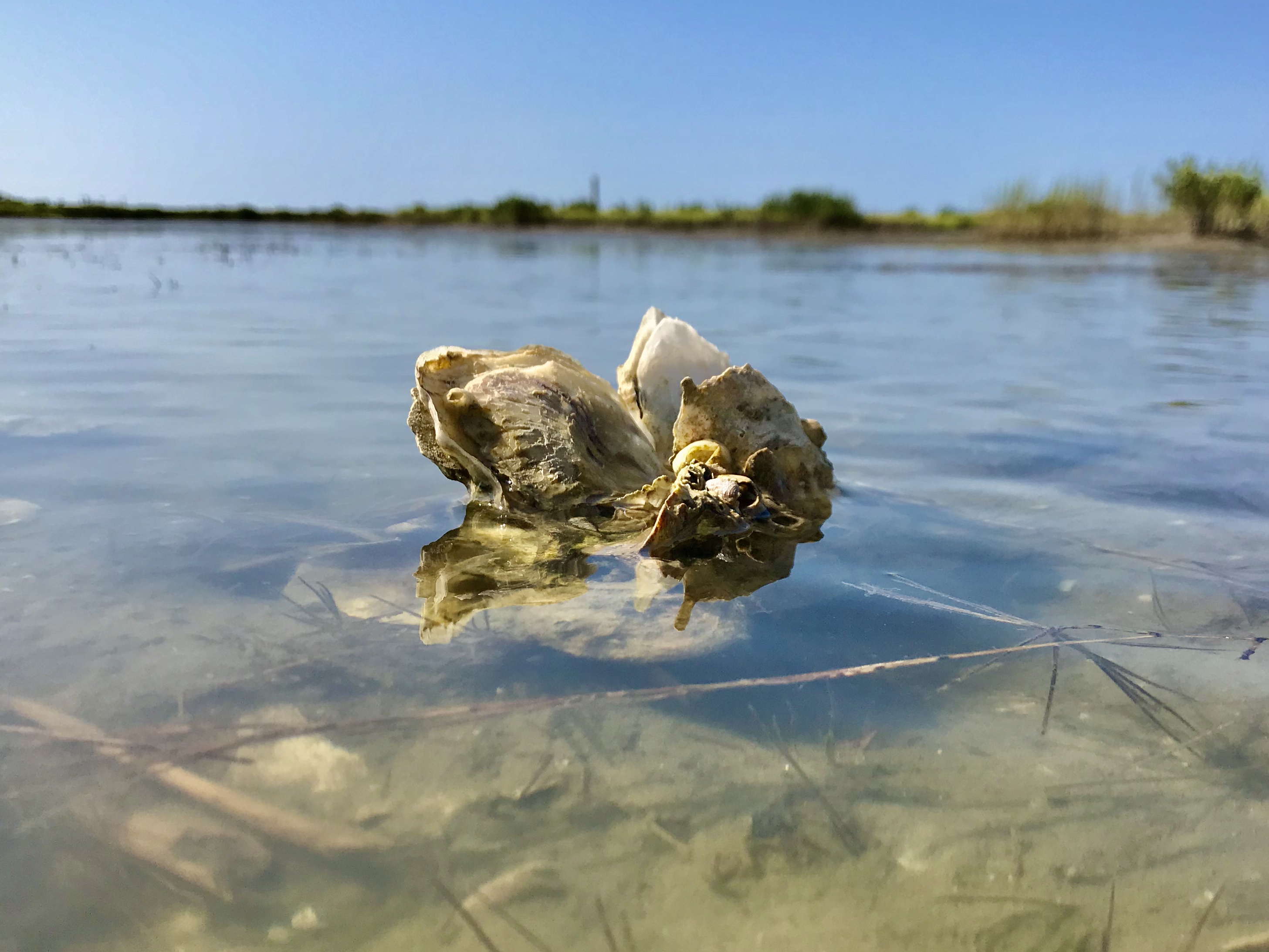Oyster fisheries in Texas are an important driver for the coastal economy and tourism. Oyster reefs can be difficult to manage because little is known about how protective actions like restoration or fishery closures impact reefs. A large-scale project will begin this year to collect a wide variety of data to understand which management actions work best and in what locations and why.
A new 1.9 million dollar award was recently announced from the National Oceanic and Atmospheric Administration to The University of Texas Marine Science Institute with partnerships with Texas A&M University-Corpus Christi Harte Research Institute, the Texas Parks and Wildlife Department, The Nature Conservancy, Texas Coastal Conservation Association, Mission-Aransas Reserve, and the City of Port Aransas. Researchers will study the response of oyster reefs to management actions and work with various stakeholders to present and digest the findings.
Oyster reefs are a cornerstone of the Gulf of Mexico's ecosystem, offering benefits that include supporting valuable fisheries, protecting coastlines from erosion, improving water quality, and providing habitat for essential marine species. Unfortunately, these reefs have substantially declined, prompting the need for well-informed conservation strategies.
Currently overseen by the Texas Parks and Wildlife Department (TPWD), the management of oyster reefs involves techniques like long-term harvest closures and supplementary actions like oyster transplants and resurfacing. Despite these efforts, the impact of these management actions on reef health and functionality needs to be more understood.
This newly funded project seeks to address this knowledge gap by answering crucial questions:
- What is the variation in oyster reef ecosystem health across five bays in South Texas?
- How strongly does oyster abundance correlate with other indicators of reef health?
- What are the effects of reef harvest closures on reef health compared to other environmental factors?
- Which currently closed reefs could benefit from restorative actions or live oyster transplants?
- Which currently opened reefs need protective measures?
Over three years, the project will employ advanced monitoring techniques on fifty oyster reefs. These methods include analyzing oyster population dynamics, assessing physical reef structures, and monitoring associated communities using environmental DNA surveys and passive acoustic techniques. Additionally, the project will track sportfish use of oyster reef habitats and assess environmental factors such as water quality, ecotoxicology, and disease prevalence.
The project aims to develop a tool that uses the collected data to predict the effects of different management actions under specific local conditions. This tool will be shared with TPWD, enhancing their ability to make well-informed decisions regarding managing Texas' oyster reefs.
The effort is led by Dr. Simon Brandl, Assistant Professor at the University of Texas Marine Science Institute (UTMSI). The project also includes Drs. Keisha Bahr, Daniel Coffey, and Jennifer Beseres-Pollack (who serves as co-production lead) from TAMU-CC, Drs. Jordan Casey, Christopher Biggs, and Kristin Nielsen from UTMSI, Dr. Emma Clarkson with TPWD, Dr. Lauren Williams with The Nature Conservancy, Shane Bonnot and John Blaha with Texas Coastal Conservation Agency, Katie Swanson at UTMSI’s Mission-Aransas National Estuarine Research Reserve, and Rae Mooney with the City of Port Aransas.










